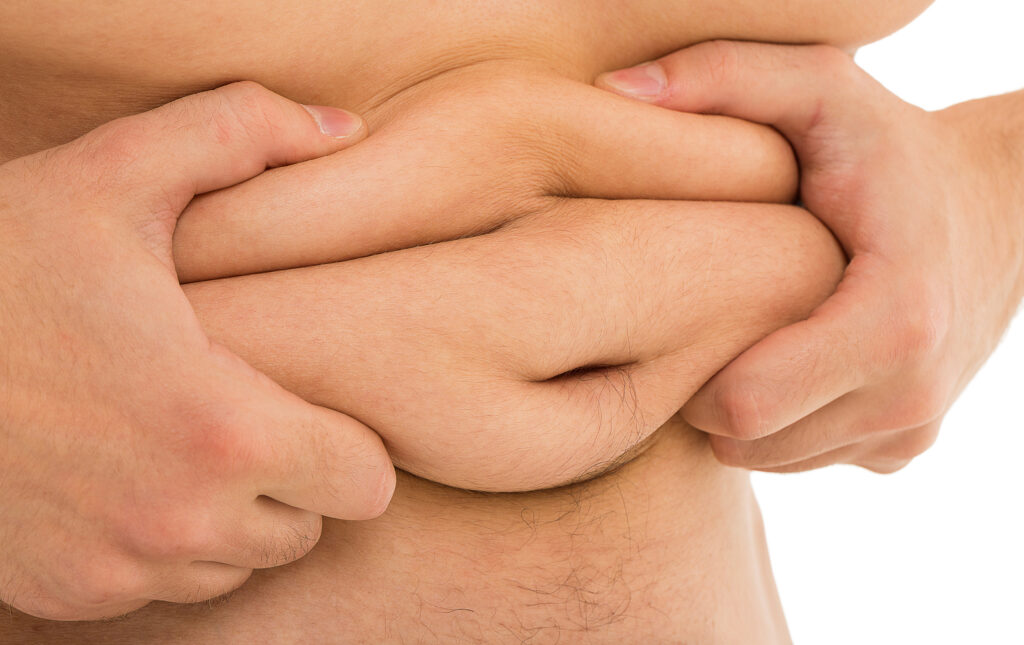Recently I spoke about low carbohydrate diets and that the only concern one should have is the development of high levels of ketone bodies in the system, and in fact the brain can utilize ketone bodies as a form of energy. Not only that, but low carbohydrate diets or any diet in fact that causes you to utilize your stored form of fat as energy, is a very efficient way of producing energy in the body and also a very brilliant way of shedding all of that extra body fat!

As time goes on and I acquire more knowledge in my studies, efficiency and methods of losing weight, building muscle, etc., will be posted, but for now I want to focus on why using fat for energy works. As mentioned above, there are many diets that forces your body to use the stored form of fat, for energy. In your body, dietary lipids (fats that you consume), are stored as TAGs (triacylglycerols) in your white adipose tissue. It is in these adipose tissue that these TAGs are degraded during states of fasting or when glucose levels are not high in the system, where another source of energy needs to be implemented. This is where beta-oxidation or the use of your stored fat, comes into play.
Lets talk quickly about what happens when you’re in a well fed state and you’ve consumed a large amount of carbohydrates in your meal. Once you’ve rolled over and ethnic fatigue starts kicking in, your beta-cells of your pancreas are releasing insulin into your system due to the high levels of glucose that’s being introduced. We know from digestion that the carbohydrates are broken down by their individual enzymes and free glucose molecules are there for the taking by the liver (as this is the time where it wants to break down your glucose levels and insulin triggers the activation of various enzymes in the liver to allow for the breaking down of glucose into energy, starts occurring). At times like this, some of those carbohydrates are yet again, stored as glycogen for a rainy day in your muscles and liver, and excess of those carbohydrates are stored as fat eventually because well fed states lead to the synthesis of fatty acids (fat)!
Now if you didn’t have high amounts of carbohydrates in your system to allow for glycolysis to occur and for energy to be synthesized from glucose, instead you have to use your body fat. Once the free fatty acids have been removed from your TAGs, they are transferred to the blood and a protein called albumin, takes it up and carries it over to the liver and your muscles (skeletal and cardiac muscles). Once there, your fatty acids have to be activated via certain enzymes, and once it’s taken into the mitochondrial matrix, beta-oxidation can occur. It isn’t important on how it got there, but once it’s there it can start using those fatty acids to synthesize the required molecules for gluconeogenesis (which is the pathway that gets activated when you’re in a fasted state or if you’re not consuming enough carbohydrates to allow for glycolysis to occur. Yes there are other ways that the body can use energy but for now, we’re looking at how fat is used and how it’s awesome!)
Through various steps, your fats are broken down into a 2-carbon molecule called acetyl CoA. This is a required precursor that will activate the enzyme in gluconeogensis. Throughout the whole process, a lot of energy is being produced. Normally, when you oxidize or use glucose for the production of energy, there is about 38 ATP (the energy used by your cells) that’s yielded from one molecule of glucose. But, when you break down fat for energy, through the beta-oxidation, you get 129 ATP!! That’s a shit load of ATP that’s produced, from just using fat instead of glucose. All of this energy comes from the different energy molecules that produce certain amounts of ATP, which I will explain below in a paragraph or you can totally just ignore it and understand that using fat for energy, through biochemical explanations, makes sense. Any diet that puts you in a deficit or allows you to use your body fat for energy or insists on a high fat diet (yes, high fat diets can help you burn fat and help you lose weight) because all other means of energy sources have been reduced, is legit in their abilities to help you get to the body fat or the physique that you are looking for! Although, I will be frank, many of the diets that shift from high carbohydrates to high protein or dietary fat diets, can be very difficult and pretty expensive. In another blog entry, I will explain how high fat diets will actually help you with reducing the synthesis of fatty acids, and lead to fat loss but for now, recognize how effective a diet like this can be.
So like I said, I would explain how the ATP formed from beta-oxidation is more by just throwing out some numbers out there for you. Using glucose as energy, you will go through glycolysis that produces 8 ATP overall, when you go from pyruvate to acetyl-CoA, you produce 6 ATP and when acetyl-CoA goes into the Kreb/citric/TCA cycle, in one round it produces 12 ATP but because it’s 2 pyruvate that’s produced from one cycle of glycolysis, it’s 24 ATP after one cycle of TCA. This all adds up to 38 ATP! Not that much energy huh? Now bare with me for a little longer with these numbers, it’s going to get a little ET in speech here but yet again, take it slow and you can impress all your friends on why high fat diets or any that causes you to use fat for energy, works. Lets use a 16 carbon fatty acid as the source of acetyl-CoA. After cleaving the fatty acid, at every final stage of beta-oxidation, in total you will have 8 Acetyl-CoA that is formed. NAD and FAD are used by different enzymes and we know that when NADH is formed, one NADH is equivalent to 3 ATP. Then when FADH2 is formed, we know that for every one molecule of that is formed, 2 ATP is equivalent to it. After the 8 Acetyl-CoA is formed, 7 NADH and 7 FADH2 are formed. That’s 14 ATP and 21 ATP, from FADH2 and NADH, respectively. All 8 of the Acetyl-CoA will enter into the TCA cycle and as 12 ATP is formed from one cycle, then 96, overall will be produced. So that’s 131 ATP that is formed from beta-oxidation but there are 2 ATP that’s used to activate the fatty acid, into the acyl-CoA that is needed as the precursor for beta-oxidation, which puts the overall energetic capability of beta-oxidation to 129 ATP! The numbers speak for themselves, 1 molecule of glucose is 38 ATP and 1 molecule of a 16 carbon fatty acid is 121 ATP. More than double. One cannot argue numbers! 🙂
People photo created by Racool_studio – www.freepik.com
